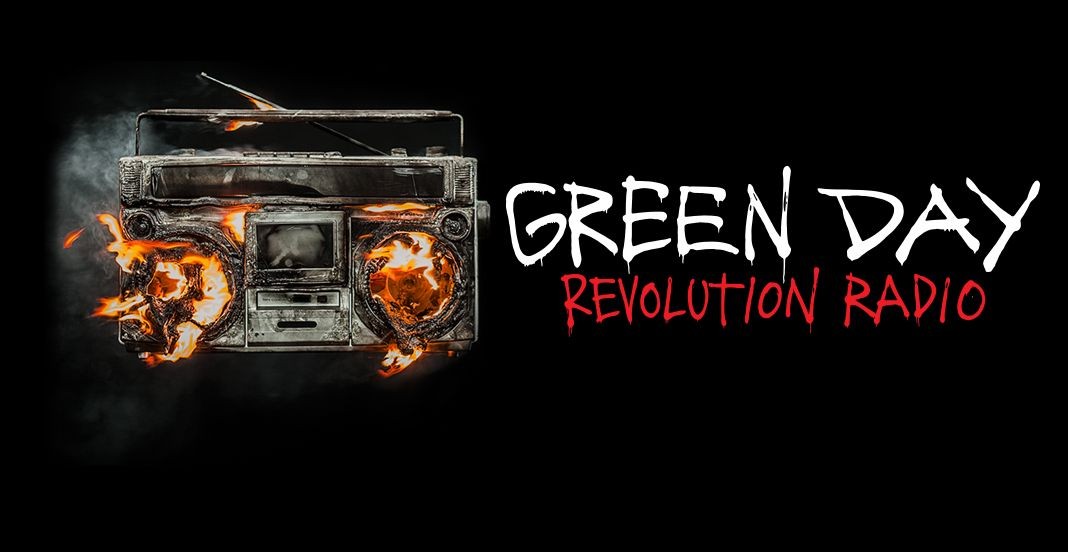
Green Day is widely regarded to be within the highest tiers of their craft. Almost everyone I’ve ever met has at least heard of them, which isn’t common for a lot of artists. Their most famous album, American Idiot, has sold 15 million copies worldwide and was even adapted into a Broadway musical in 2009. They’ve released a handful of other successful albums too, such as Nimrod, Dookie, and 21st Century Breakdown.
The four years after the release of the albums ¡Uno!, ¡Dos!, and ¡Tré! in 2012 were a time of radio silence for the band. Besides a release of demos in 2014, the group was almost completely unheard from. Fans were ecstatic when the band suddenly released a single in late-August of 2016, showing that they were soon going to return to the mainstream scene. Two more singles ensued, and it was only a matter of time before the rest of the album was made open to the public. On October 7, Revolution Radio went live as Green Day’s twelfth studio album.
Critics may have only given it “generally favorable” reviews, but Revolution Radio really is a satisfying and well rounded album. It has already topped lists as number one in several countries, and been favored pretty highly in others.
It comes with a new style that still stays true to the “Green Day sound”, but brings to the table a more hard punk-rock vibe to match the tone of the album’s theme. It focuses on the state of rampant gun violence in the United States, with the album’s lead single “Bang Bang” describing a mass shooter’s decline to psychopathy and how the media brings so much attention to his act that it only further feeds the narcissism he was seeking to satisfy. It doesn’t tell a cohesive story like American Idiot and 21st Century Breakdown did, but it still has a consistent tone and none of the songs feel blatantly out of place.
The opening track “Somewhere Now” starts off calm but transitions to the more punk-rock vibe later in the song. It doesn’t start off with the pedal to the metal, but rather it incorporates a flow from something that’s somewhat calming into what we would expect to listen to throughout the duration of the album. It’s with the second song, “Bang Bang,” that the tone is officially set. It’s early enough in the album to establish the vibe but not too early to completely overwhelm listeners.
Revolution Radio is full of these good decisions. The structure, the lyrics, and the depth of the sound are just a few of the things that Green Day did so well in creating it. It keeps to the style of the band’s past works while also bringing some new aspects to the table. It’s refreshing enough to warrant repeated listens from fans, while also being a familiar enough to be likeable by old and new fans of the genre.
While some of the songs don’t exactly break the horizon of genius, those songs aren’t necessarily awful, either. The mediocre songs don’t feel lazily put together enough to be considered filler upon the first listen. Again, none of the songs feel “bad,” just “alright” at the least. And when the songs are good, they’re really good. Songs like “Bang Bang,” “Revolution Radio,” and “Still Breathing” are both memorable and likeable, and haven’t gotten old in the countless times I’ve listened to them. Even the album’s finishing song “Ordinary World” does it’s job as a good standalone tune and a great way of bringing the listening experience of the album to a close.
Overall, Revolution Radio is a catchy album with a good structure and a new sound for the band. It’s hard to not give rhythmic nods of the head when listening to “Bang Bang” or any of the other songs on the record, at the very least. It’s catchy, it’s invigorating, and most importantly, it’s a great album for Green Day to return with. Whether you’re a long time fan or someone who’s just hearing about the group, do yourself a favor and listen to this album. Even if the collective whole of the album isn’t appealing, there’s a good chance you’ll end up liking at least one of the songs you listen to.